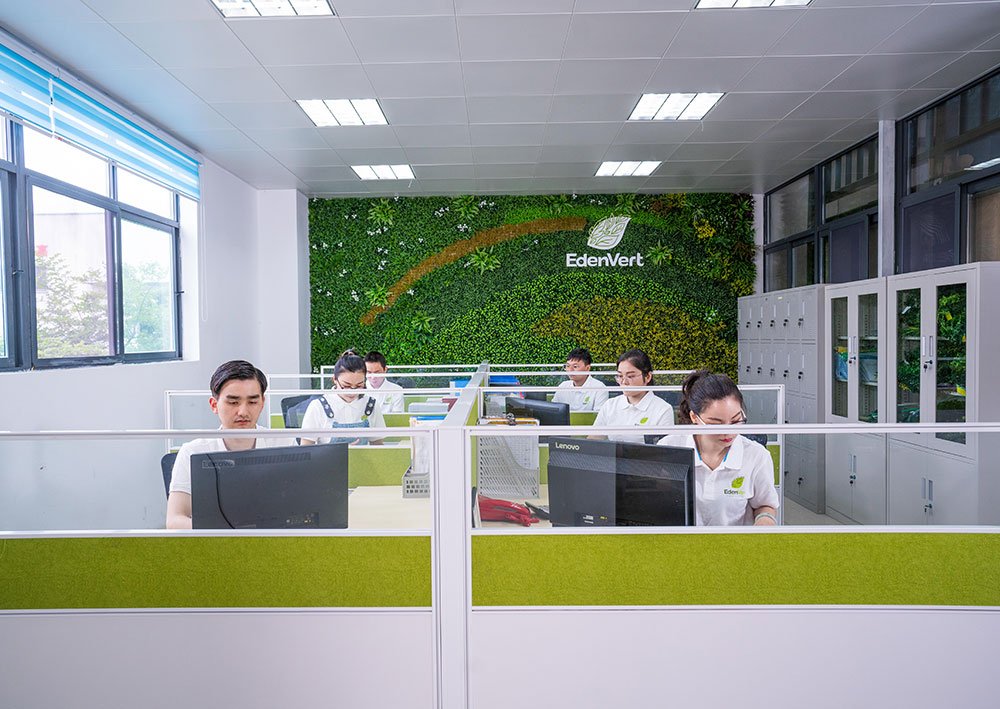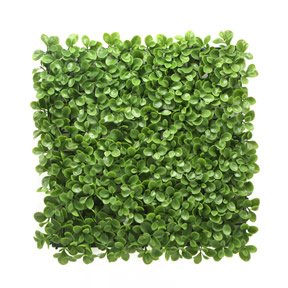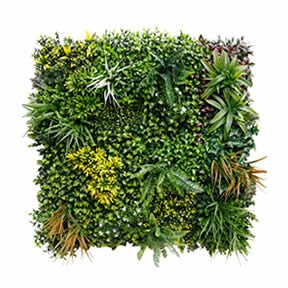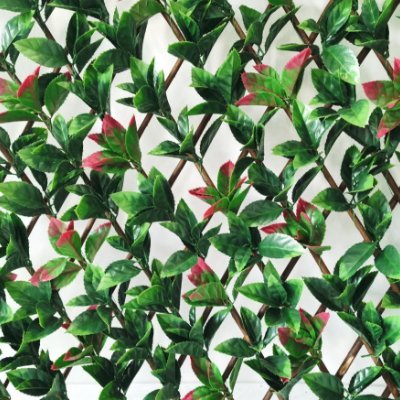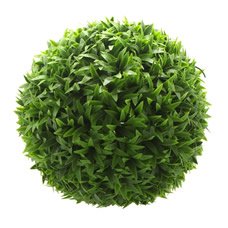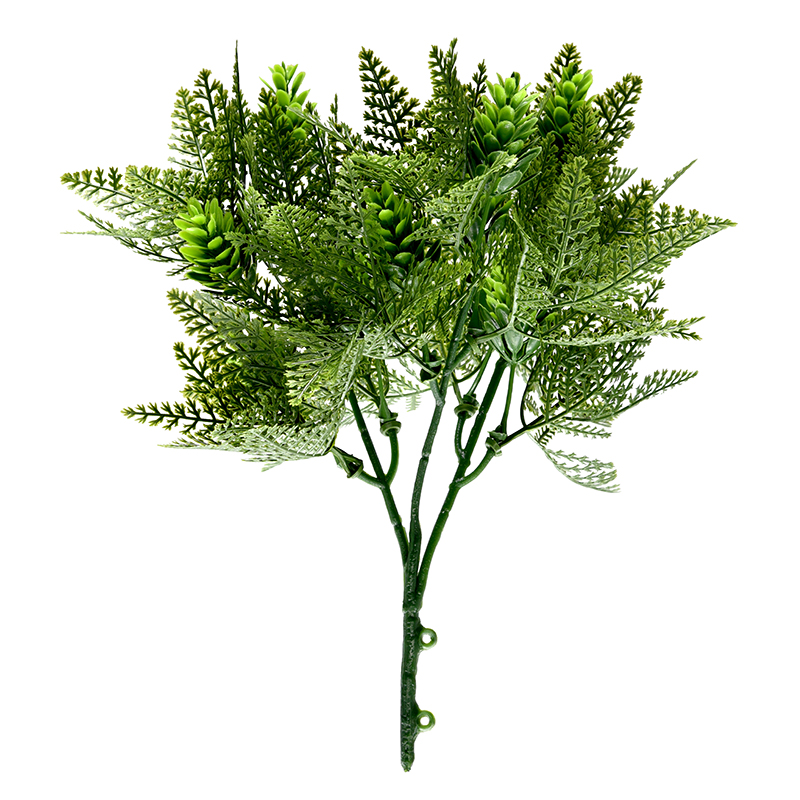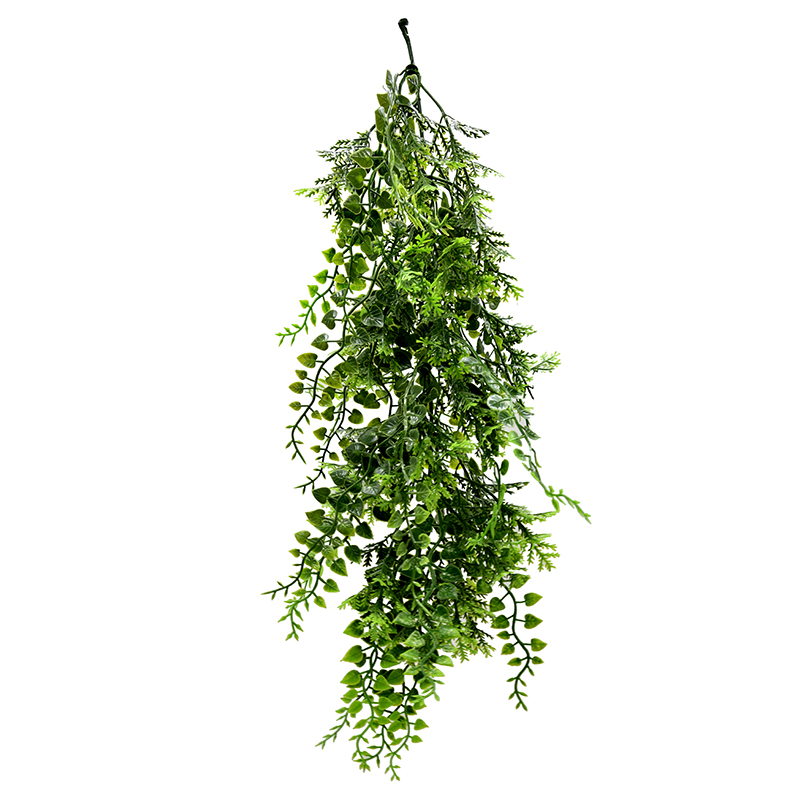Real vs Artificial Plants: What’s the Difference and Which to Choose?
 2025 02 3
2025 02 3When it comes to home design, greenery plays a vital role in creating a warm and stylish environment. It complements a range of decor preferences and adds freshness and charm to the space.
Whether hanging a draping plant in the corner, utilizing lush greenery as a centerpiece for the dining table, or placing a tall plant next to the sofa, there are many ways to add a pop of green to create a cozy, fresh, and joyful atmosphere.
Sound straightforward, right? However, in the realm of selecting greenery for your space, the dilemma of choosing between real or artificial plants arises. In brief, each has its merits, and the decision largely hinges on your individual circumstances, design preferences, and living space. In this blog, we’ll explore the pros and cons of fake plants versus real plants to help you make an informed decision.
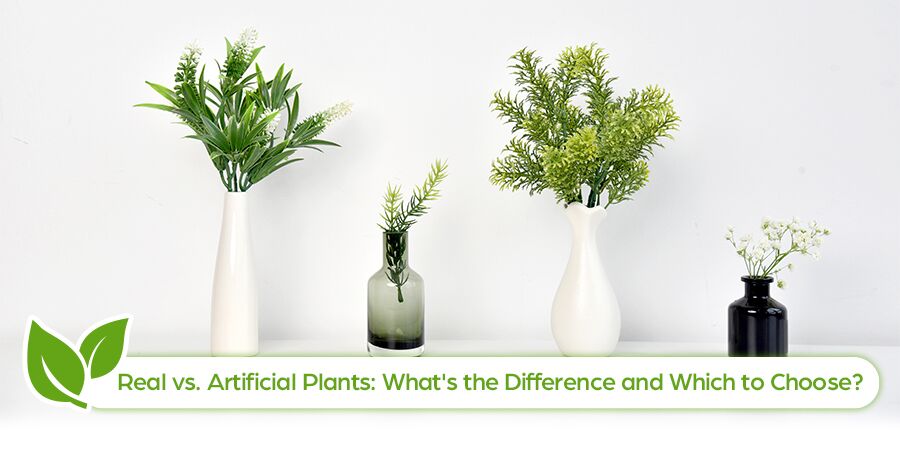
Should I Buy Real or Fake Plants for My Home?
There are many pros and cons when it comes to real vs artificial plants. Some factors may significantly influence your choice, while others might be less relevant. Consider the following questions before making a decision:
- How often am I home? Frequent travel or an unpredictable schedule can make caring for live plants challenging. Even the easiest-to-care-for live plants require attention, so a busy lifestyle might steer the decision toward artificial plants.
- What level of upkeep suits my lifestyle? Even without travel concerns, preferences for plant maintenance vary. While some enjoy nurturing high-maintenance plants and observing their growth, others prefer options that require minimal attention. Choosing real or artificial, first understand how much time and effort can be dedicated to plant care.
- How much space is available? The space in your home plays a key role in plant selection. Live plants often grow larger over time, so adequate room for expansion is essential. Consider not only the size but also whether the location provides enough sunlight for a live plant.
- Are pets a consideration? Pets like cats or dogs often find amusement in chewing leaves or digging in soil. Consider whether your pet tends to interact with plants when deciding on the best option for your home.
Real vs Artificial Plants: Pros and Cons
Pros of Real Plants
- Connection to Nature: Real plants create a bond with the environment, fostering a calming and refreshing atmosphere indoors.
- Air Quality Improvement: By absorbing carbon dioxide and releasing oxygen, real plants enhance air quality. Certain speciescan even filter harmful toxins, promoting a healthier indoor environment.
- Sense of Achievement: For many, plants are seen as ongoing projects. The joy and fulfillment that come from nurturing a plant to thrive over time can boost self-esteem and foster a sense of self-worth.
- Mood Enhancement: The presence of plants has a soothing effect, with gardening and plant care shown to reduce stress and promote positive emotions.
Cons of Real Plants
- Pests and Insects: Real plants can attract pests like aphids, mites, and gnats, which may invade living spaces. Addressing these issues often requires pesticides or other interventions.
- Allergy Risks: Pollen from plants and mold in moist soil can trigger allergies, potentially impacting the health of household members.
- Toxicity for Pets: Many common household plants contain toxic compounds that can harm pets if ingested. This risk requires extra vigilance for pet owners.
- High Maintenance: Regular watering, pruning, and repotting can be demanding. Some plants are particularly sensitive, and neglect can lead to wilting or decline within days.
Pros of Artificial Plants
- No Watering Needed:Artificial plants eliminate the need for regular watering, avoiding issues like over- or under-watering. Their low maintenance make them a convenient choice.
- No Soil Maintenance: Without the need for soil, fertilization, or chemical treatments, artificial plants require little attention beyond occasional dusting, saving time and effort.
- Pest-Free: Unlike live plants, faux plants do not attract bugs or pests, keeping your home cleaner and more hygienic.
- Flexible Placement: Artificial plants thrive in any location, regardless of light or temperature conditions. They maintain their appearance whether placed in a sunny window or a dim corner.
- Year-Round Availability: Artificial plants are always in season, offering access to any plant type at any time of the year.
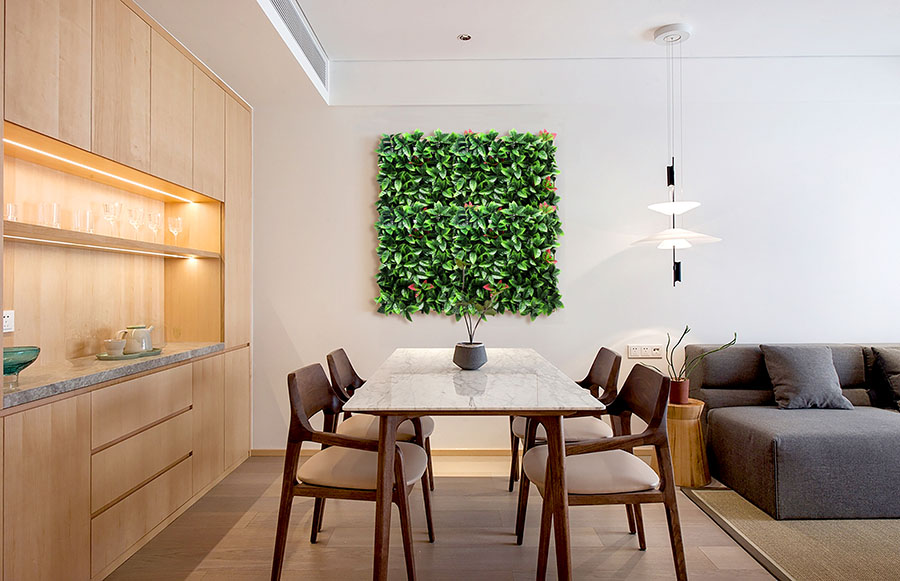
- Durable and Resilient: Artificial plants withstand harsh conditions, making them ideal for high-traffic areas or outdoor events.
- Perpetual Freshness: Artificial plants maintain their lush appearance without the need for pruning or cleaning up fallen leaves.
Cons of Artificial Plants
The main drawback of fake plants lies in the quality of the product. Low-quality faux plants can appear cheap and plasticky, undermining their natural look.
To avoid these issues, select artificial plants from reputable suppliers. While high-quality options may cost more upfront, they save money over time by avoiding the recurring expenses associated with live plants, such as replacement costs, soil, fertilizers, and pesticides.
What Types of Artificial Plants Are Best?
Once you’ve decided on faux plants, you’ll need to think about which type of faux plants would be best for your home. The right choice depends on factors such as style, placement, and desired ambiance. To avoid artificial plants that appear overly synthetic, focus on these key features:
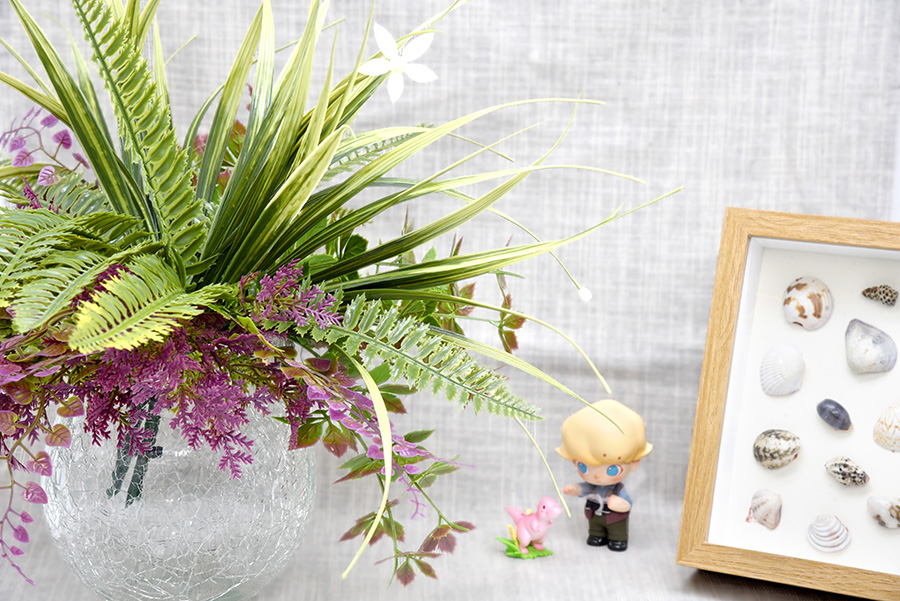
- Realistic Stems or Trunks: Natural-looking branches and trunks enhance authenticity.
- Imperfect Leaves or Petals:Slight variations mimic the imperfections of real foliage.
- Attractive Pots: A well-chosen pot can elevate the overall look, though pots can be easily swapped later.
- Soil-Like Base: Details like faux dirt or moss in the pot add a touch of realism.
Avoid fake plants with overly glossy finishes or exaggerated features like fake raindrops, which can detract from their natural appearance. Opt instead for elements like delicate root sheaths for an organic touch. If possible, compare the artificial plant to images of its real counterpart for a closer match.
Here are some top recommendations for artificial plants:
- Fiddle-Leaf Fig Trees: A faux fiddle-leaf fig tree provides the striking visual appeal of its real counterpart, free from the mild toxicity concerns for pets. Perfect for creating a bold statement piece.
- Monstera Plants: Artificial monstera plants are ideal for indoor gardens, featuring lush green leaves that add a dramatic touch. Pair with a stylish ceramic pot for added charm.
- Agave Plants: Faux agave plants replicate the striking silhouette of the real plant without needing full sunlight. They’re also a safer option for pet owners, as real agave is toxic.
- Tropical Plants: From sweeping palms to vibrant hibiscus blooms, artificial tropical plants create an island-inspired retreat without requiring specific climates or care.
- Artificial Plant Panels:Artificial wall panels are an excellent solution for creating vertical greenery. They deliver a lush, uniform appearance, perfect for enhancing walls or partitions.
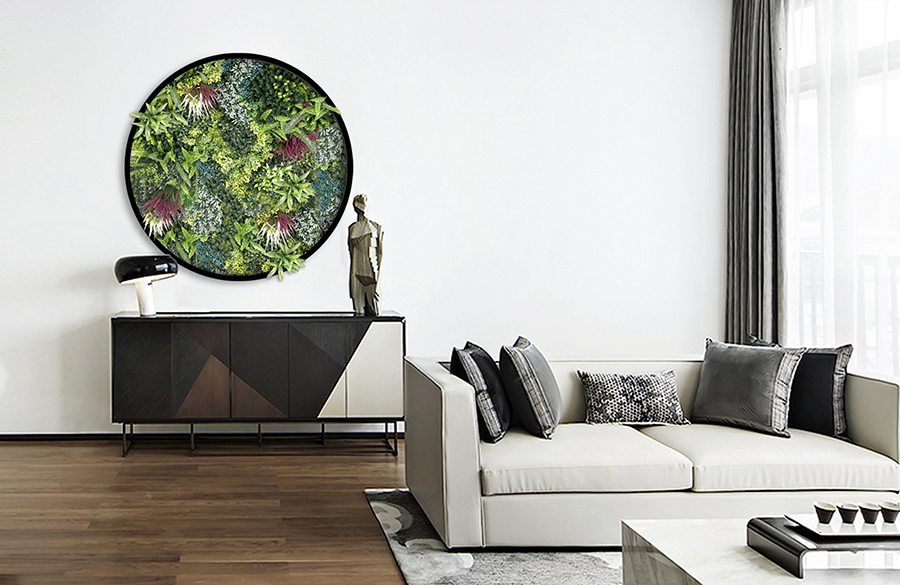
- Succulents: Artificial succulents are highly versatile and lifelike, whether in the form of tall, spiky cacti or charming miniature arrangements. Their waxy appearance is expertly replicated.
- Bamboo: Faux bamboo offers the beauty of this resilient plant without the invasive growth of its live counterpart. It stays perfectly contained in its pot and complements minimalist or Zen-inspired designs.
- Hydrangeas: Artificial hydrangeas retain their vivid colors indefinitely, making them a vibrant choice for floral displays without fading or wilting.
- Orchids: Faux orchids deliver the elegance of real orchids without the high-maintenance care. Their delicate blooms brighten spaces with grace.
- Peonies: Full, robust petals make faux peonies a stunning addition to any room. They stay fresh-looking year-round, unlike real peonies that droop over time.
Are Fake Plants Tacky in 2025?
No.
The concept of “tacky” is subjective—what one person finds appealing, another may view as unappealing. Different perspectives often lead to varied descriptions of the same object.
When deciding between real or artificial plants, focus on your own preferences and practical needs, rather than external opinions. What matters most is what fits your vision and what you can realistically maintain.
As people lead increasingly busy lives, faux plants have grown in popularity. However, if you enjoy gardening and can commit time to caring for a real plant, it’s a great option.
Both artificial and real plants have their own benefits and drawbacks. Ultimately, the decision between real vs artificial plants comes down to which option works best for your lifestyle.
Thank you for reading! For any questions, feel free to contact us at [email protected]. We always appreciate hearing from you!
